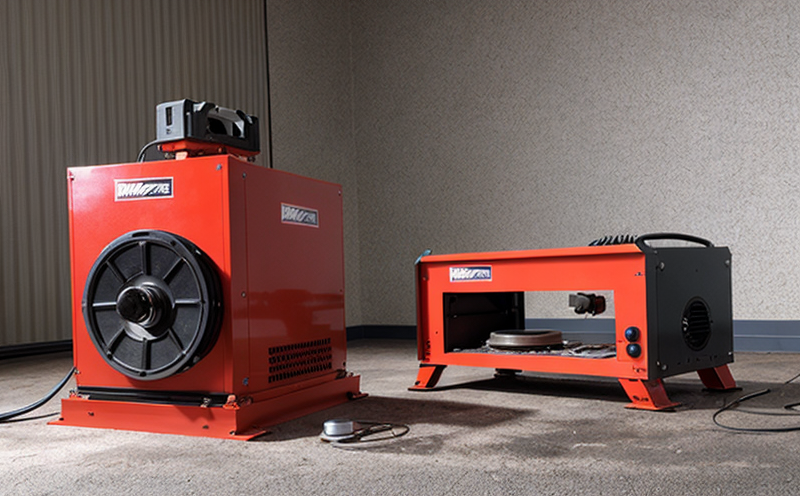IEC 60068-2-64 Random Vibration Testing
IEC 60068-2-64 random vibration testing is a critical standard used to evaluate the durability and reliability of products in environments subject to mechanical stress, particularly shocks and impacts. This test ensures that products can withstand the rigors of real-world conditions, which include transportation, handling, and use. Compliance with this standard is essential for manufacturers aiming to meet international quality requirements, especially in sectors like automotive, aerospace, electronics, and consumer goods.
The IEC 60068-2-64 test simulates the random vibration environment that a product might encounter during its lifecycle. This includes various types of shock and impact tests where the frequency range is broad, typically between 10 Hz to 5 kHz or higher depending on the specific application. The testing process involves subjecting the specimen to a controlled random waveform, often described by a power spectral density (PSD) function.
During this test, the specimen must be mounted in a vibration rig that can generate and control the random vibrations. The rig is typically equipped with an accelerometer to monitor the environmental conditions and ensure the specimen remains within acceptable limits during the testing period. The duration of the test varies depending on the application but generally ranges from 20 minutes to several hours.
Key acceptance criteria include ensuring that no damage or degradation occurs in the specimen under specified conditions. This includes checking for structural integrity, electrical connections, and overall performance. Compliance with IEC 60068-2-64 ensures that products can withstand the rigors of transport, handling, and use without compromising their safety or functionality.
The testing process requires careful attention to detail in specimen preparation. The specimen must be securely mounted on a test fixture that allows for accurate measurement of its response to vibrations. Preparing the specimen involves ensuring it is clean, free from defects, and properly wired if applicable. Additionally, the mounting system should not introduce additional stresses or distortions into the specimen.
| Standard | Description |
|---|---|
| IEC 60068-2-64 | Random vibration testing for environmental conditions. |
| ISO 17598:2013 | Vibration testing of electronic and electromechanical products. |
Applied Standards
The IEC 60068-2-64 standard is one of the most widely recognized and applied in the field of environmental testing. It specifies procedures for random vibration testing, which are crucial for assessing the durability of products under dynamic stress conditions. This standard ensures that products meet stringent quality requirements by simulating real-world environments.
| Standard | Description |
|---|---|
| IEC 60068-2-64 | Random vibration testing for environmental conditions. |
| ISO 17598:2013 | Vibration testing of electronic and electromechanical products. |
Industry Applications
The IEC 60068-2-64 random vibration testing is widely used across various industries to ensure product durability and reliability. Key sectors include automotive, aerospace, electronics, and consumer goods.
- Automotive Industry: Ensures vehicle components can withstand road conditions, including potholes and rough terrain.
- Aerospace Industry: Tests the resilience of avionics and satellite components to space and launch vibrations.
- Electronics Industry: Evaluates electronic devices for resistance against mechanical shocks during manufacturing and distribution.
- Consumer Goods: Guarantees household appliances can endure typical usage and transportation conditions.
International Acceptance and Recognition
The IEC 60068-2-64 standard is widely accepted in the international community for its rigorous testing procedures. Compliance with this standard ensures that products meet global quality standards, enhancing their marketability across borders.
Many regulatory bodies and certification programs require compliance with IEC standards as part of their approval processes. This includes organizations like Underwriters Laboratories (UL) and CE marking in the European Union. The standard's recognition also contributes to reducing technical barriers to trade by ensuring consistent quality across different markets.





